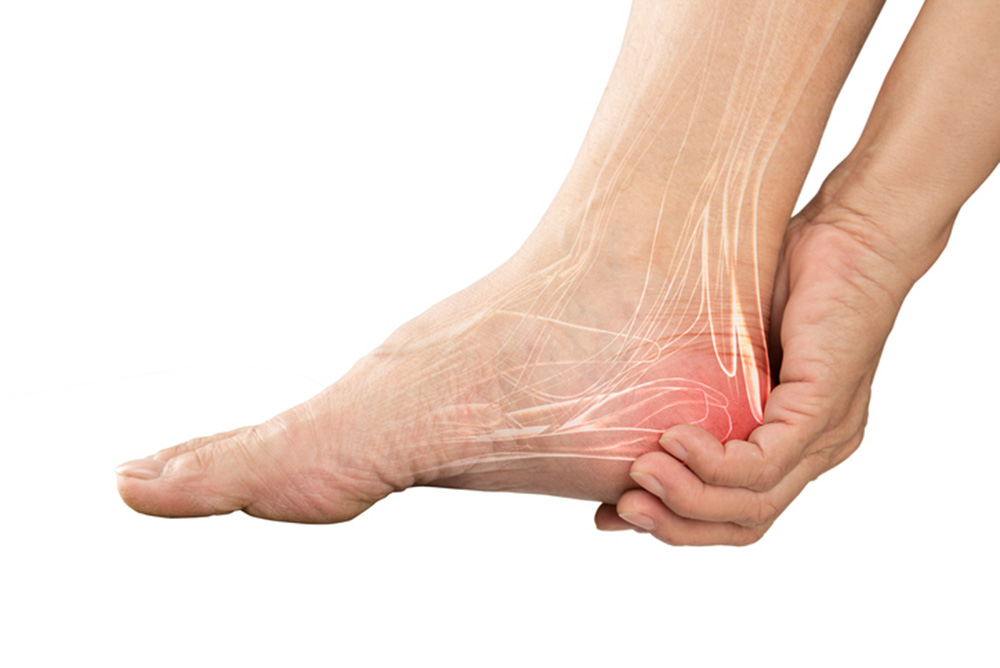
iStock
A NEW YORK art curator in her 60s was a runner until numbness in her feet and legs caused her to stumble and fall. DC writer M.W. began experiencing similar numbness following a short but intense bout of Lyme disease, which led to her stumbling and falling, as well as causing her not to feel pain from a injury or notice a foot infection.
Most people learn about peripheral neuropathy (PN), a neurological condition that affects 25 to 30% of Americans —some 20 million—only when they, or a friend, experience symptoms including numbness, tingling, pain burning sensations, loss of coordination or reflexes and the feeling of wearing socks and gloves when you are not.
“Idiopathic peripheral neuropathy” accounts for about 25% of the conditions. Idiopathic indicates that the cause is unknown, particularly to distinguish these from the 30% or so of neuropathies caused by diabetes and affecting almost 70% of diabetics.
Peripheral nerves include both sensory nerves, which carry messages about perception—for example, of touch, heat or pain—from the extremities up the nervous system to the brain; and motor nerves which send signals in the opposite direction telling muscles to move.
Sensory neurons in the skin respond to pain and temperature changes while those in the muscles respond to pressure, but these nerves and their functions are intricately intertwined, which is why sensory loss can disturb motor performance. Problems with these receptors can cause neuropathic pain from damaged nerves; hyperalgesia, heightened sensitivity to pain; and phantom limb syndrome. More than 100 different types of peripheral neuropathy are classified based on variables like cause and type of nerve damage.
Risk of PN increases with age, most commonly after age 60, and the condition is more common among Caucasians and men, as well as among people working in professions that require repetitive motions.
Carpal tunnel syndrome (CTS) is unusual among neuropathies because it affects only one nerve. Considered a “compression neuropathy,” CTS results from pressure on the nerve due to repeated stress or narrowing of the nerve space. Especially if identified early, CTS often responds to treatment.
Longer-lasting neuropathies can be caused by infections: viruses such as herpes, and bacteria such as that responsible for Lyme disease. In one study, after an average of six years following treatment for Lyme, 34% of patients had symptoms that included neuropathy. Linked to Lyme disease, Bell’s palsy results when a facial nerve becomes swollen or inflamed, although it has also been linked to upper respiratory infections as well as diabetes and pregnancy.
Spinal stenosis, or narrowing of the spine, especially in the lower back or lumbar region, can put pressure on the spinal cord and nerve roots to cause neuropathy, most commonly in the sciatic nerve.
Neuropathy can also be hereditary—most commonly as a symptom of Charcot-Marie-Tooth disease—which causes weakness in the foot and lower leg muscles, and related to autoimmune disorders such as Guillain-Barre syndrome. Also linked to PN are medications, including chemotherapy drugs and statins, used to lower cholesterol; alcoholism; and exposure to toxic substances such as heavy metals.
Treatment for PN usually starts with neurologic tests, mainly to rule out a brain tumor, such as the electromyogram and nerve conduction tests —both to assess nerve and muscle function, and to measure electrical properties of the nerves to pinpoint which ones are involved. A spinal tap or lumbar puncture can help identify infection that might be associated with neuropathy.
Early treatment is important because peripheral nerves have a limited capacity to regenerate and can at least stop progression of the condition. Conservative measures include hot/cold therapy (alternating cold packs and hot pads), physical therapy, low-impact activities and OTC medication like aspirin or ibuprofen to relieve pain and inflammation.
Medication, such as steroids, local anesthetics and opioids, can also be given via injection into the area near a nerve. Reducing irritation can help the nerves heal enough for the patient to take on more active physical therapy and higher-impact physical activity.
For the art curator, after surgery to relieve compression on the nerves in her spine, numbness was replaced by tingling, which her doctor considered a sign of improving nerve function and gave her hope, if not for running, then for playing tennis again soon.
While tingling sensations usually indicate pressure on a damaged nerve, doctors believe these can also be a sign of regeneration, suggesting the presence of young axons in the process of growing.
M.W. felt lucky her neuropathy was limited to numbness, without the tingling or pain that plagued others. And there was one benefit—a clearly sprained toe didn’t hurt. On the other hand, she was unhappy to hear her son’s recommendation as she wobbled near the end of a long walk on uneven terrain, “Mom, have you thought of using a cane?” But when a small cut on the bottom of her foot became infected without her knowing—because there was no pain—she began to worry.
After trying acupuncture and several physical therapy practices, M.W. moved to a physical therapy practice based in Pilates theory and movement, which seemed to help. She still hopes the cane is a long way off, although “walking sticks” have started to look more appealing.
—Mary Carpenter
Every Tuesday in this space, well-being editor Mary Carpenter fills us in on health news we can use.

These articles are always helpful, filled with solid information. I especially was interested to read that neuropathy can be a long-lasting result of Lyme disease.